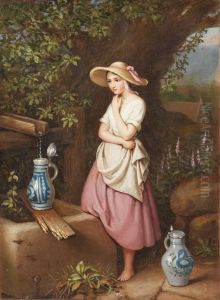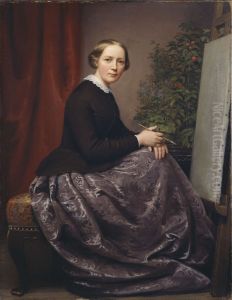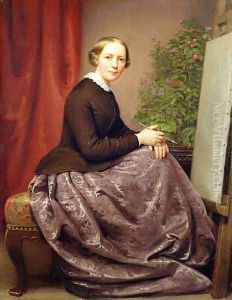Caroline von der Embde Paintings
Caroline von der Embde, born in 1780 in Kassel, Germany, was a notable figure in the art world during the early 19th century. Although not widely known today, her contributions to the arts during her lifetime were significant, especially as a woman in a male-dominated field. She belonged to an era when women artists were often overlooked, and their achievements were seldom documented with the same rigor as their male counterparts.
Caroline's artistic education began in her hometown under the guidance of local artists, which was a common practice for women of her social standing. She honed her skills in painting and drawing, focusing particularly on portrait art, which was a popular genre of the time. Her work was known for its delicate touch and attention to detail, qualities that were highly appreciated in the portraiture of the era.
Despite the constraints placed on women in the arts, von der Embde managed to gain some recognition for her work. She participated in exhibitions and had a clientele that commissioned her for portraits. Her style reflected the sensibilities of the Biedermeier period, characterized by a focus on the middle class and domestic life, as well as an emphasis on simplicity and modesty in art.
Caroline von der Embde lived through a period of significant social and political change in Europe. The Napoleonic Wars and the subsequent reshaping of the continent's political landscape would have had an impact on the art market and the patronage system that supported artists like her. Nevertheless, she continued to work and contribute to her local art scene until her death in 1852.
Unfortunately, much of Caroline von der Embde's life and work remain obscure, and specific details about her career and influence are limited. The scarcity of information can be attributed to the lack of comprehensive records about many women artists of her time. Today, art historians are making efforts to rediscover and re-evaluate the contributions of such artists, giving them their rightful place in the history of art.






